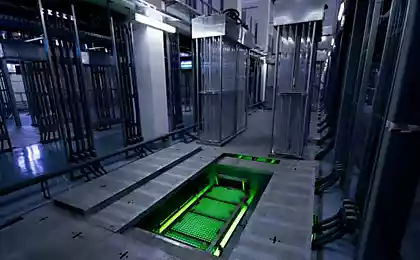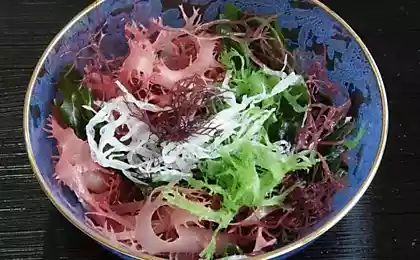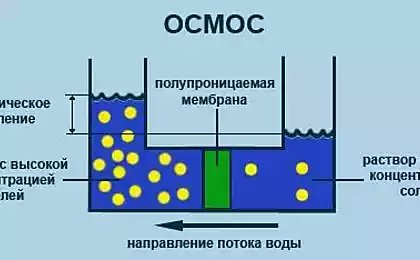555
Who lives in the water samples from the intake filters
Information about which types of microorganisms, bacteria and algae live in the activated sludge, is divided running on wastewater treatment plants gidroekolog, he is responsible for the monitoring of the species composition of activated sludge (the substance, which deals with the treatment).
I recently had the honor porazglyadyvat samples from the intake filters. When these filters are opened for repair or any purpose, from the walls in different places scraped the sludge and send it to us so we looked to see who it crawls, and issued a conclusion in the form of "pure", "come" or "sucks" (do not know what they do in the latter case, whether the measures some take, or just upset).
Traditionally, this deals with another person that I for this purpose use can not guess, whether shy (because I do not my boss), and I the initiative did not climb to my enthusiasm on the part of the water creatures looks quite unhealthy and makes the torment with the thought, am I too spend a lot of time this is not too important part of their duties to the detriment of everything else.
But in less than four years, as I use all the same guessed, probably, now, this responsibility will pass to me. The filters were many of these algae, to the friends only accidentally coming across the pictures on the Internet, like these:

These preferred food algae live in these colonies are usually flat, round, but sometimes oval or even kidney-shaped, solid or perforated. The colony size of 4 to 64 cells, although there is much more.
Cells arranged in concentric circles, a spiral, or in no particular order.
External and internal cells on the form are different: external have 1 — 4 of the Appendix, but from the inside everything happens.
Chloroplast massive, wall, with one pyrenaicum.
Dehghanisanij reproduce by zoospores, which are formed inside the cell and then out through the rupture of its walls or start to form a new colony right inside. From time to time instead of zoospores the gametes are formed having smaller dimensions.
Pediastrum simplex
The outer cells with one process each. But otherwise hard to guess that all these algae belong to the same species. Colonies may be both perforated and solid.

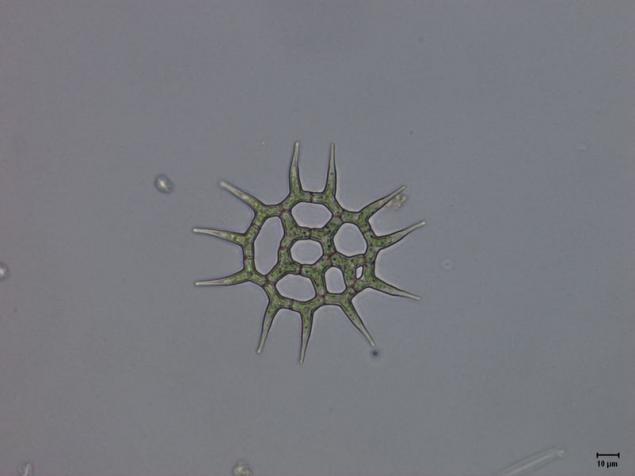

Pediastrum simplex var. biwaense:

Pediastrum simplex var echinulatum:

Pediastrum duplex
Cells are almost similar, H-shaped so that each outer cell has two process, the colonies are always perforated.



Pediastrum duplex var. gracillimum:

Pediastrum boryanum
The outer cage also with two processes, but without the internal processes so that the colony is dense, solid or with small perforations.


Pediastrum boryanum var. longicorne:

Pediastrum angulosum
From the preceding species has a very subtle, even I will not undertake to say what.



Pediastrum biradiatum
The colony perforated, to contain 32 cells. Cells are often similar, H-shaped, with short and extended bases. Exterior with two wide blades, each of which is divided into two process. The inner — unbranched appendages, which cells are connected.

var. longicornutum:
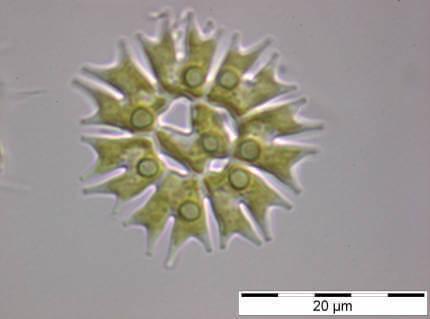
Pediastrum tetras
In colonies typically of up to 16 cells, but can be up to 32, of the colony solid or with small holes. The outer cells of the double-branch out four generations. One of the most common species.



Pediastrum kawraiskyi
Colony solid, rarely with small holes, up to 32 cells. The outer cells of the two processes located perpendicular to the plane of the colony.
Pediastrum braunii
Colony solid, up to 16 cells. The outer cells with four short spines, of which the extreme is located in the plane of the colony, and the internal perpendicular. "Free-floating" images on the Internet, and from "the Determinant of algae of Ukraine" pull out do not see the point as the view is even more rare.
Also interesting: Halanaerobium-Hydrogeninformans - a bacterium that produces hydrogen
Bacteria linked global genetic network
And just pictures from the forum, probably Pediastrum duplex, although anything can happen. published



Source: aspidisca.livejournal.com/62702.html?media
I recently had the honor porazglyadyvat samples from the intake filters. When these filters are opened for repair or any purpose, from the walls in different places scraped the sludge and send it to us so we looked to see who it crawls, and issued a conclusion in the form of "pure", "come" or "sucks" (do not know what they do in the latter case, whether the measures some take, or just upset).
Traditionally, this deals with another person that I for this purpose use can not guess, whether shy (because I do not my boss), and I the initiative did not climb to my enthusiasm on the part of the water creatures looks quite unhealthy and makes the torment with the thought, am I too spend a lot of time this is not too important part of their duties to the detriment of everything else.
But in less than four years, as I use all the same guessed, probably, now, this responsibility will pass to me. The filters were many of these algae, to the friends only accidentally coming across the pictures on the Internet, like these:

These preferred food algae live in these colonies are usually flat, round, but sometimes oval or even kidney-shaped, solid or perforated. The colony size of 4 to 64 cells, although there is much more.
Cells arranged in concentric circles, a spiral, or in no particular order.
External and internal cells on the form are different: external have 1 — 4 of the Appendix, but from the inside everything happens.
Chloroplast massive, wall, with one pyrenaicum.
Dehghanisanij reproduce by zoospores, which are formed inside the cell and then out through the rupture of its walls or start to form a new colony right inside. From time to time instead of zoospores the gametes are formed having smaller dimensions.
Pediastrum simplex
The outer cells with one process each. But otherwise hard to guess that all these algae belong to the same species. Colonies may be both perforated and solid.



Pediastrum simplex var. biwaense:

Pediastrum simplex var echinulatum:

Pediastrum duplex
Cells are almost similar, H-shaped so that each outer cell has two process, the colonies are always perforated.



Pediastrum duplex var. gracillimum:

Pediastrum boryanum
The outer cage also with two processes, but without the internal processes so that the colony is dense, solid or with small perforations.


Pediastrum boryanum var. longicorne:

Pediastrum angulosum
From the preceding species has a very subtle, even I will not undertake to say what.



Pediastrum biradiatum
The colony perforated, to contain 32 cells. Cells are often similar, H-shaped, with short and extended bases. Exterior with two wide blades, each of which is divided into two process. The inner — unbranched appendages, which cells are connected.

var. longicornutum:

Pediastrum tetras
In colonies typically of up to 16 cells, but can be up to 32, of the colony solid or with small holes. The outer cells of the double-branch out four generations. One of the most common species.



Pediastrum kawraiskyi
Colony solid, rarely with small holes, up to 32 cells. The outer cells of the two processes located perpendicular to the plane of the colony.
Pediastrum braunii
Colony solid, up to 16 cells. The outer cells with four short spines, of which the extreme is located in the plane of the colony, and the internal perpendicular. "Free-floating" images on the Internet, and from "the Determinant of algae of Ukraine" pull out do not see the point as the view is even more rare.
Also interesting: Halanaerobium-Hydrogeninformans - a bacterium that produces hydrogen
Bacteria linked global genetic network
And just pictures from the forum, probably Pediastrum duplex, although anything can happen. published



Source: aspidisca.livejournal.com/62702.html?media



